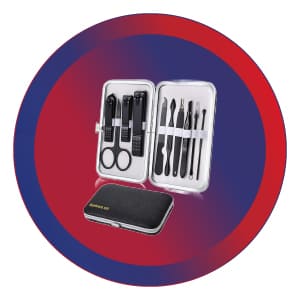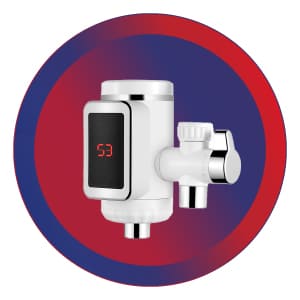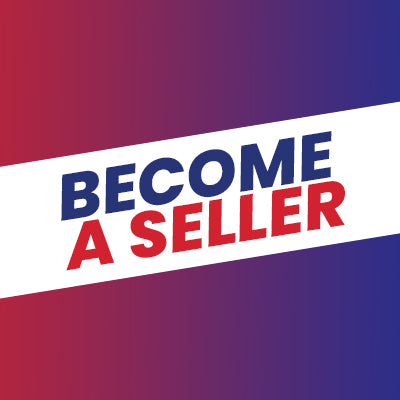
From Idea to Success: Start a winning E-commerce business in 2023
The potential of e-commerce in 2023 continues to grow rapidly, driven by advancements in technology, changes in consumer behaviour, and the convenience it offers to both buyers and sellers.
Here are the steps involved in starting an ecommerce business:
1) Define your business idea:
Identify the product or service you want to sell online. Research the market demand, competition, and potential profitability of your chosen niche.
2) Create a business plan:
Outline your goals, target audience, marketing strategies, and financial projections. A well-structured business plan will guide your decisions and help secure funding if needed.
3) Choose a business model:
Decide whether you want to build your own e-commerce website or use an existing platform like Shopify, WooCommerce, or Amazon. Each option has its advantages, so evaluate which one aligns best with your goals and resources to take that informed call!
4) Source or create products:
Determine how you will acquire or produce the products you plan to sell. This could involve manufacturing, dropshipping, wholesale purchasing, or creating your own unique products.
5) Set up your website:
If you choose to build your own website, select a domain name, design an attractive and user-friendly interface, and integrate secure payment gateways. Make sure your website is optimised for mobile devices.
6) Manage inventory and logistics:
Establish a system for inventory management, order processing, and shipping. Consider outsourcing fulfillment or using third-party logistics providers to streamline these processes.
7) Develop a marketing strategy:
Utilise digital marketing techniques such as search engine optimization (SEO), social media marketing, content marketing, and paid advertising to drive traffic to your website and generate sales.
8) Ensure legal compliance:
Familiarising yourself with the legal requirements for running an e-commerce business in your jurisdiction is a great idea. This may include obtaining necessary licences, registering your business, and complying with consumer protection laws.
9) Provide excellent customer service:
Make sure you prioritise customer satisfaction by offering reliable customer support, hassle-free returns, and prompt communication. Positive reviews and word-of-mouth recommendations are extremely essential for building trust and loyalty.
10) Analyze and optimise:
Make it a point to monitor your website analytics, sales data, and customer feedback. Identify areas for improvement, optimize your marketing strategies, and adapt your business based on the insights gained.
Identify Your E-commerce Business Idea

An idea can definitely alter your world. Well, definitely your ecommerce world.
Try these following steps to figure out an ecommerce business idea for yourself:
1) Conduct market research:
Make a start by researching current trends, consumer demands, and popular products in the market. Look for gaps or underserved areas where you can offer a unique product or service.
2) Identify product opportunities:
Analyze customer preferences, pain points, and emerging needs. Look for product categories or niches that align with your interests, expertise, and target audience. Consider conducting surveys, analyzing online forums, and using keyword research tools to gather insights.
3) Evaluate competition:
Identify your potential competitors and analyze their offerings, pricing strategies, and target market. Assess the competition's strengths and weaknesses to find opportunities for differentiation and innovation.
4) Assess viability and profitability:
Evaluate the potential demand for your product or service. Consider factors such as market size, growth potential, pricing dynamics, and profit margins. Determine if there is a sustainable customer base willing to pay for your offering.
5) Validate your idea:
Test your business idea by conducting a small-scale pilot or launching a minimum viable product (MVP). This can help you gather feedback, validate market demand, and refine your offering based on real customer interactions.
6) Choose a business model:
Explore different business models that suit your product and resources. Here are a few common models:
a. Retail:
Purchase products from suppliers or manufacturers and sell them directly to customers through your e-commerce platform. This model gives you control over inventory, pricing, and branding.
b. Manufacturing:
Create your own products from scratch or customise existing products. This model requires more investment and expertise in production, but it offers greater control over the product and potential for higher profit margins.
c. Dropshipping:
Partner with suppliers who handle the inventory and shipping processes. You act as a middleman, marketing and selling products without the need to hold inventory. Dropshipping can be a low-risk model with lower upfront costs.
d. Subscription:
Offer products or services on a recurring subscription basis. This model provides a predictable revenue stream and encourages customer loyalty.
e. Marketplace:
Create a platform where multiple sellers can list and sell their products. You earn revenue through commissions or fees charged to sellers.
f. Digital products:
Sell digital goods such as e-books, software, online courses, or memberships. Digital products often have lower production costs and can be easily scaled.
Make sure to evaluate the pros and cons of each model, considering factors like scalability, investment requirements, operational complexity, and your long-term business goals.
Develop Your Business Plan

Developing your business plan is of utmost importance when it comes to making long-term goals. Here are the key components to include when formulating your business plan -
1) Executive Summary:
Provide an overview of your business idea, mission statement, key objectives, and highlights of your business plan.
2) Company Description:
Describe your e-commerce business, its legal structure, location (if applicable), and any unique factors that set you apart from the competition.
3) Market Analysis:
Conduct a thorough analysis of your target market, including the size, growth potential, and key trends. Identify your target audience and create customer personas to understand their needs, preferences, and behaviours.
4) Competitive Analysis:
Identify your competitors and analyze their strengths, weaknesses, and market positioning. Determine your unique selling proposition (USP) or competitive advantage that sets you apart from them.
5) Product or Service Description:
Provide detailed information about the products or services you will offer. Highlight their features, benefits, and how they fulfill customer needs. Explain any unique aspects or innovations that make your offerings stand out.
6) Marketing and Sales Strategy:
Outline your marketing and sales tactics to reach and attract your target audience. Include your pricing strategy, distribution channels, promotional activities, and customer acquisition plans. Identify the key metrics you will use to measure the effectiveness of your marketing efforts.
7) Operations and Management:
Outline the roles and responsibilities of your team members, including their qualifications and relevant experience. Discuss your supply chain management, inventory control, fulfilment processes, and any technology or software you will use to streamline operations.
8) Financial Projections:
Consider factors such as product costs, marketing expenses, website development and maintenance costs, customer acquisition costs, and projected profit margins. Use realistic assumptions and consider various scenarios to assess the financial viability of your business.
9) Funding and Investment:
If you require funding to start or grow your e-commerce business, outline your funding needs and potential sources of investment. This may include personal savings, loans, grants, or seeking out investors. Include a clear explanation of how the funds will be utilised and how investors can expect a return on their investment.
10) Risk Assessment:
Identify potential risks and challenges that your e-commerce business may face, such as competition, changing market trends, supply chain disruptions, or regulatory issues. Develop contingency plans and strategies to mitigate these risks.
11) Implementation Timeline:
Create a timeline that outlines the key milestones and tasks for launching and scaling your e-commerce business. Set specific deadlines and assign responsibilities to ensure efficient execution.
12) Monitoring and Evaluation:
Define the metrics and key performance indicators (KPIs) you will use to monitor the progress and success of your e-commerce business. Establish a system for regular evaluation and adjustment of your strategies based on the insights gained.
Source or Develop Your Products

When it comes to sourcing products for your e-commerce business, it's important to choose the right method and establish relationships with reliable suppliers or manufacturers. Here's a step-by-step approach:
1) Determine your sourcing method:
Consider the following options and choose the one that best fits your business model and resources:
a. Manufacturing:
If you have the expertise and resources, you can manufacture your own products. This gives you control over the production process, quality, and customization. However, it requires significant investment, knowledge of manufacturing processes, and management of the supply chain.
b. Wholesaling:
Purchase products in bulk from wholesalers or distributors. This allows you to benefit from economies of scale and usually offers lower product costs. However, you may have limited control over product customization and branding.
c. Dropshipping:
Partner with suppliers who handle inventory storage, packaging, and shipping. With dropshipping, you don't need to hold inventory, which reduces upfront costs and allows for greater flexibility. However, you have less control over fulfilment and quality control.
2) Research and identify potential suppliers or manufacturers:
Consider factors such as product quality, pricing, production capacity, reliability, and their ability to meet your requirements. Online directories, industry trade shows, and networking can be valuable resources for finding potential partners.
3) Evaluate supplier credibility and capability:
Before finalising partnerships, assess the credibility and capability of potential suppliers. Request samples of their products to assess quality, inspect their manufacturing facilities if possible, and inquire about their production capacity and lead times.
4) Communicate your requirements:
Clearly communicate your product specifications, quality standards, packaging requirements, and any customization or branding needs to the suppliers or manufacturers. Ensure they understand your expectations and can meet them consistently.
5) Negotiate pricing and terms:
Engage in negotiations to secure competitive pricing and favorable terms. Consider factors such as order quantities, payment terms, shipping arrangements, and any additional services or support they can provide. Aim for a win-win situation that ensures profitability for both parties.
6) Establish a solid relationship:
Build a strong relationship with your suppliers or manufacturers based on trust, transparency, and effective communication. Maintain regular contact, provide feedback, and address any concerns promptly.
7) Quality control:
Implement quality control measures to ensure that the products you receive meet your standards. This may involve inspecting samples, setting up quality control checkpoints during production, or engaging a third-party inspection service. Regularly review and provide feedback to suppliers to maintain consistent product quality.
8) Monitor supplier performance:
Continuously evaluate the performance of your suppliers in terms of product quality, reliability, delivery times, and responsiveness. Regularly assess their performance against agreed-upon metrics and key performance indicators.
Set Up Your E-commerce Website

This is a crucial step in starting your online business as this is the space that connects clients, vendors and you together
Here are the steps you can follow to help you get started:
1) Select an e-commerce platform:
Choose a suitable e-commerce platform that aligns with your business needs and technical capabilities. Some popular options include:
a. WooCommerce: A plugin for WordPress that provides robust e-commerce functionality and flexibility.
b. Shopify: A fully hosted platform that offers a user-friendly interface, various templates, and integrated payment gateways.
c. Magento: A powerful and scalable open-source platform suitable for larger businesses with complex requirements.
d. BigCommerce: A feature-rich platform that offers a range of customizable templates and built-in marketing tools.
Evaluate the features, pricing, scalability, ease of use, and customization options of different platforms before making a decision.
2) Design your website
Creating an attractive and user-friendly website is what attracts a lot of clients towards your business.
a. Clear navigation: Make it easy for visitors to find products, browse categories, and access important pages like the shopping cart and checkout.
b. Engaging visuals: Use high-quality product images, videos, and visual elements that showcase your products effectively.
c. Clear product descriptions: Provide detailed and accurate descriptions of your products, highlighting their features, benefits, and specifications.
d. Simple checkout process: Ensure a seamless and user-friendly checkout experience with minimal steps and clear instructions.
e. Trust elements: Include trust signals such as customer reviews, security badges, and guarantees to build trust and credibility with your customers.
f. Responsive design: Optimise your website for mobile devices to ensure a seamless browsing and shopping experience across different screen sizes.
3) Customise your website
Your brand identity is what sets your business apart from the others. Personalise your website to reflect your brand identity.
Customise the colours, fonts, and layouts to align with your brand image. Ensure consistency in design elements throughout the website.
4) Integrate secure payment gateways:
Set up secure and reliable payment gateways to process online transactions. Popular options include PayPal, Stripe, Authorize.Net, or payment options provided by your chosen e-commerce platform. Make sure compliance with security standards and reassure customers of their data protection.
5) Optimize for search engines (SEO):
Implement search engine optimization techniques to improve your website's visibility in search engine results.
This includes optimizing product pages with relevant keywords, creating unique and informative product descriptions, optimizing page titles and meta tags, and building backlinks from reputable sources.
6) Test and optimize:
Thoroughly test your website's functionality, navigation, and checkout process to ensure a smooth user experience. Monitor user behaviour and collect data to identify areas for improvement. Continuously optimise your website based on user feedback, analytics, and conversion rates.
7) Implement analytics and tracking:
Integrate web analytics tools such as Google Analytics to track website traffic, visitor behavior, and conversion rates. Use this data to gain insights into customer preferences, identify opportunities for improvement, and make data-driven decisions.
8) Ensure website security:
Protect your website and customer data by implementing security measures such as SSL certificates, secure payment gateways, and regular security updates. Regularly backup your website to safeguard against data loss.
Plan Your Order Fulfilment Process

Determine the most efficient shipping and logistics strategy Set up inventory management and order tracking systems Ensure a seamless customer experience from order placement to delivery
Here are the steps to incorporate with this process:
1) Choose a shipping and logistics strategy:
Evaluate different shipping options based on factors such as cost, speed, reliability, and the nature of your products. Consider working with shipping carriers like UPS, FedEx, DHL, or regional/local couriers.Make sure to compare their rates, delivery times, and tracking capabilities to determine the best fit for your business.
2) Determine shipping costs and policies:
Calculate shipping costs based on factors like weight, dimensions, destination, and shipping method. Decide whether you will offer free shipping, charge a flat rate, or calculate shipping costs based on real-time carrier rates. Establish policies regarding international shipping, returns, exchanges, and any additional charges (e.g., handling fees).
3) Set up inventory management system:
Implement an inventory management system or use e-commerce platforms that provide built-in inventory management features. Track and manage your inventory levels, including stock availability, reordering thresholds, and SKU management. This helps prevent stockouts, overstocking, and ensures accurate product listings on your website.
4) Implement order tracking and notifications:
Set up an order tracking system that allows customers to track the progress of their shipments. Integrate tracking numbers and shipping updates into your website or provide links to carrier tracking pages. Automate email notifications to inform customers about order confirmation, shipment tracking details, and delivery updates.
5) Streamline order processing:
Develop a standardised order processing workflow. This includes receiving orders, verifying payment, updating inventory, picking and packing items, generating shipping labels, and coordinating with the shipping carrier for pickup or drop-off. Automate as much of the process as possible to minimise errors and save time.
6) Packaging and labelling:
Determine the appropriate packaging materials to ensure products are well-protected during transit. Use branded packaging when possible to reinforce your brand identity. Include packing slips, invoices, return labels, and any necessary documentation in the package. Adhere to any specific packaging requirements or regulations for certain product categories.
7) Establish fulfilment timelines:
Set clear expectations for order processing and fulfilment times. Communicate estimated processing times on your website and in order confirmation emails. Aim to fulfil orders promptly and provide accurate delivery estimates to manage customer expectations.
8) Monitor and optimize fulfillment performance:
Continuously monitor your order fulfillment process to identify bottlenecks or areas for improvement. Track order processing times, fulfillment accuracy, shipping delays, and customer feedback. Use this information to make necessary adjustments, streamline operations, and enhance the overall customer experience.
9) Customer service and support:
Offer responsive and reliable customer service throughout the order fulfillment process. Provide channels for customers to contact you with any inquiries or issues related to their orders. Be proactive in resolving customer concerns and providing updates on order status or shipping delays.
10) Evaluate shipping performance and costs:
Regularly review your shipping performance and costs. Analyze carrier performance, track delivery times, and assess the accuracy of shipping cost calculations. Negotiate shipping rates with carriers based on your shipping volume and explore opportunities to optimize shipping costs while maintaining service quality.
Effective Marketing Strategies:

Effective marketing strategies help to attract engaging customers.
Here are certain steps to help you develop and execute your marketing efforts:
1) Develop a strong brand identity:
Define your brand's mission, values, and unique selling proposition (USP). Create a compelling brand story and visually appealing branding elements, including a logo, colour palette, and consistent visual language. Ensure that your brand identity resonates with your target audience and differentiates you from competitors.
2) Craft your messaging:
Develop clear and persuasive messaging that communicates the benefits and value of your products or services. Tailor your messaging to resonate with your target audience's needs, desires, and pain points. Use language and tone that aligns with your brand personality and appeals to your target market.
3) Utilise various marketing channels available -
a. Social media marketing:
Identify the social media platforms most relevant to your target audience and establish a presence on those channels. Develop a content strategy that includes a mix of engaging posts, visual content, customer testimonials, and promotions. Use social media to interact with your audience, respond to inquiries, and build a community around your brand.
b. Email marketing:
Build an email list of interested customers and prospects. Create segmented email campaigns to deliver personalised content, product recommendations, exclusive offers, and updates about your business. Use email automation to send targeted messages at different stages of the customer journey.
c. Paid advertising:
Consider running paid advertising campaigns on platforms like Google Ads, Facebook Ads, or Instagram Ads. Set specific goals, such as increasing brand awareness, driving website traffic, or generating conversions. Utilise targeting options to reach your desired audience and continuously optimise your ads based on performance data.
4) Leverage content marketing:
- Create high-quality and valuable content to attract and engage your target audience. This can include blog posts, how-to guides, videos, infographics, or podcasts.
- Also, Optimise your content for search engines (SEO) to improve organic visibility. Share your content on your website, social media platforms, and through email newsletters to increase brand exposure and drive traffic to your e-commerce site.
5) Collaborate with influencers:
Identify influencers or industry experts who align with your brand and target audience. Partner with them to promote your products or services through sponsored content, reviews, or giveaways. Influencer partnerships can help expand your reach, build credibility, and generate product awareness among their followers.
6) Monitor and analyse results:
Track and analyse the performance of your marketing campaigns. Use analytics tools to measure key metrics such as website traffic, conversion rates, engagement, and return on investment (ROI). Identify what's working well and what needs improvement, and make data-driven adjustments to optimise your marketing efforts.
7) Provide exceptional customer experiences:
Word-of-mouth and positive customer reviews are powerful marketing tools. Focus on delivering exceptional customer service, providing a seamless shopping experience, and exceeding customer expectations. Encouraging customer feedback and reviews can also contribute to active engagement with customers to build long-term relationships.
8) Stay updated with marketing trends:
Continuously educate yourself about emerging marketing trends, technologies, and consumer behaviour shifts. Experiment with new strategies, test different channels, and adapt your marketing approach to stay relevant and ahead of the competition.
Financial Considerations

Financial considerations are an extremely imperative factor to take under consideration when planning to make your business idea a reality.
Here are the steps to help you calculate costs, explore funding options, and implement financial tracking systems:
1) Calculate startup costs:
Identify and estimate the costs involved in starting your e-commerce business. Some key expenses to consider include:
a. Website development and design:
This includes domain registration, website hosting, e-commerce platform fees, website design and development costs, and any necessary plugins or integrations.
b. Inventory:
Calculate the cost of sourcing or manufacturing your products, packaging materials, and initial stock levels. Consider any upfront costs associated with inventory storage or fulfillment.
c. Marketing and advertising:
Determine the budget for marketing and advertising campaigns, including social media ads, paid search, content creation, influencer collaborations, and other promotional activities.
d. Operational expenses:
This includes costs like office space or utilities (if applicable), equipment or software purchases, employee salaries or outsourcing fees, legal and accounting services, and insurance.
e. Legal and regulatory compliance:
Consider the costs associated with business registration, licenses, permits, trademark filings, and any legal consultations needed to ensure compliance with e-commerce regulations.
f. Technology and infrastructure:
Assess the costs of essential technology and infrastructure such as computers, software, payment gateways, customer support tools, and security measures.
2) Explore funding options:
Determine if you need external funding to support your e-commerce business. Explore different funding sources such as:
a. Small business loans:
Research loan options available for small businesses through banks, credit unions, or online lenders. Prepare a comprehensive business plan and financial projections to present to potential lenders.
b. Grants and government programs:
Investigate grants or financial assistance programs that may be available for entrepreneurs or specific industry sectors. Research government programs that support small businesses and startups.
c. Personal savings or bootstrapping:
Consider using personal savings, investments, or funds from friends and family to finance your e-commerce business.
d. Crowdfunding:
Explore the possibility of raising funds through crowdfunding platforms where individuals contribute to your business in exchange for products, equity, or other incentives.
Also, consider the following -
a. Accounting software:
Use accounting software like QuickBooks, Xero, or FreshBooks to track income, expenses, and generate financial reports. This helps you monitor cash flow, prepare tax filings, and gain insights into your business's financial performance.
b. Payment and order tracking systems:
Integrate payment gateways and order management systems with your e-commerce platform to track revenue, sales, and customer orders efficiently.
c. Budgeting and forecasting:
Develop a budget and financial forecast to plan and manage your financial resources effectively. Set realistic revenue targets, expense budgets, and regularly review and adjust them as needed.
d. Financial reporting and analysis:
Establish a regular reporting schedule to monitor key financial metrics such as revenue, gross margin, conversion rates, and marketing ROI. Analyse financial data to make informed decisions and identify areas for improvement.
e. Cash flow management:
Pay close attention to cash flow by monitoring cash inflows and outflows, optimising payment terms with suppliers, and managing inventory levels to ensure a healthy cash flow position.
You can also seek professional advice from an accountant or financial advisor to ensure you have proper financial systems in place and comply with relevant regulations and tax obligations.
Tips for Success:
Simplicity is the true basis for success.
Here are some tips you should follow -
- Start with a simple product offering and expand gradually.
- Focus on building a loyal customer base through exceptional customer service.
- Embrace multichannel selling to reach a wider audience.
- Consider listing your products on popular marketplaces like Amazon, eBay, or Etsy, in addition to your own e-commerce website.
- Utilize social media platforms, such as Facebook, Instagram, or Pinterest, to showcase your products and engage with potential customers.
Conclusion:
All the above moving parts holistically help you to start your own ecommerce business in the United Kingdom and every other parts of the world and make it a success.
Frequently Asked Questions
1) What is the 1st step to start an ecommerce business?
The first step to start an ecommerce business is to determine your business idea and conduct market research to validate its viability and potential demand. This involves identifying your target audience, analysing competitors, and understanding market trends.
2) How much money is needed for e-commerce?
The amount of money needed for an e-commerce business can vary significantly depending on various factors such as the scale of your operations, product sourcing or manufacturing costs, marketing budget, website development and maintenance costs, and other operational expenses. It is important to carefully estimate your costs and create a budget based on your specific business requirements.
3) Is it free to start e-commerce?
While it is possible to start an ecommerce business with little to no upfront cost by utilising free platforms like social media or marketplace accounts, there are still costs associated with running a professional e-commerce operation. These can include domain registration, website hosting, marketing expenses, and product sourcing or manufacturing costs.
4) Do I need a business licence to sell online in the UK?
In the UK, you may need a business licence to sell online, depending on the nature of your business and the products you are selling. It is recommended to consult with local authorities or a business advisor to understand the specific licensing requirements applicable to your business.
5) Can I sell online without a business licence in the UK?
Selling online without a business licence in the UK may be possible for certain types of activities or products, but it is important to comply with the relevant laws and regulations. Always seek proper legal advice to ensure you are operating within the legal framework.
6) How to start an e-commerce business in the UK?
To start an e-commerce business in the UK, consider the following key steps: research and validate your business idea, register your business with the appropriate authorities, create a business plan, set up your e-commerce website, source or develop your products, establish effective marketing strategies, and ensure legal compliance.
7) What are the 3 types of e-commerce?
The three main types of e-commerce are:
- Business-to-Consumer (B2C)
- Business-to-Business (B2B)
- Consumer-to-Consumer (C2C)
8) What type of e-commerce makes the most money?
The type of e-commerce that makes the most money can vary depending on various factors such as market demand, target audience, and business model. B2C e-commerce, particularly in popular consumer segments such as fashion, electronics, and home goods, often has significant revenue potential.
However, success ultimately depends on factors like effective marketing, product quality, customer experience, and competitive positioning.
9) How can a beginner make money on e-commerce?
For beginners looking to make money on e-commerce, these following steps will be helpful:
- Choose a profitable niche: Research and identify a niche market with potential demand and less competition.
- Source or create compelling products: Find reliable suppliers or manufacturers for your products or develop your own unique offerings.
- Build a professional e-commerce website: Set up a user-friendly website to showcase and sell your products.
- Implement effective marketing strategies: Utilize social media, content marketing, SEO, and paid advertising to reach and engage your target audience.
- Provide exceptional customer service: Focus on delivering outstanding customer experiences to build trust and loyalty.
- Continuously analyze and optimize: Monitor your performance, gather customer feedback, and make data-driven improvements to your marketing, products, and operations.'
10) How do I start a small e-commerce business?
To start a small e-commerce business, these following steps will be helpful:
- Identify your niche and target audience.
- Conduct market research to validate demand and competition.
- Create a business plan outlining your goals, strategies, and financial projections.
- Register your business and obtain necessary licences and permits.
- Set up your e-commerce website using a suitable platform.
- Source or develop your products and manage inventory effectively.
- Implement marketing strategies to promote your business and attract customers.
- Provide excellent customer service and prioritise customer satisfaction.
- Continuously monitor and optimise your operations and marketing efforts.
11) How hard is it to start an ecommerce business?
In the UK, e-commerce businesses are generally subject to taxes such as Value Added Tax (VAT) and income tax. It is important to consult with an accountant or tax advisor to understand and fulfil your tax obligations.
Starting an ecommerce business can have its challenges, but it is not necessarily overly difficult. It requires careful planning, research, and execution.
12) Do you pay taxes on e-commerce in the UK?
Yes, e-commerce businesses in the UK are generally subject to taxes, including VAT and income tax.
13) How hard is it to start an ecommerce business?
Starting an ecommerce business can have its challenges, but the level of difficulty can vary depending on several factors.
These include your experience, the complexity of your business model, the market you're entering, and your ability to adapt to changing trends.
With careful preparation, dedication, and a willingness to learn and adapt, it is possible to navigate these challenges and build a successful ecommerce business.




































































































































































































































































































